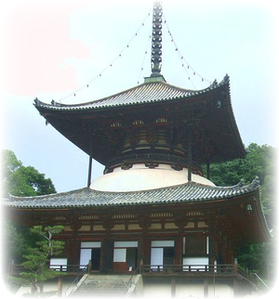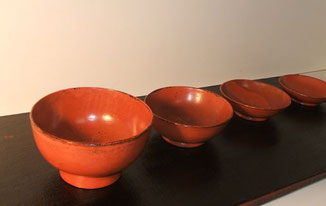Negoro-nuri lacquerware

Negoro-nuri is a lacquerware originating from Negoro-ji Temple in Wakayama Prefecture.
Negoro-ji Temple was founded at the end of the Heian Period and became powerful with 300 to 400 follower temples at its peak. The temple had a systematic factory that produced lacquer products, including furniture.
Negoro-ji Temple’s lacquerware became popular among tea professionals for its characteristic black lacquer layer appearing beneath the red lacquer coating as the lacquerware was well-used. Gradually, negoro was used to describe the lacquerware with well-used touches.
My negoro texture is made by polishing the top layer until the lower layer appears. I then add another layer of lacquer to make it stronger.
The difference between negoro-nuri and negoro

Although I was also confused about the difference between the two, it seems better to see negoro-nuri and negoro as a two separate terms.
A negoro-nuri researcher, the late Professor Sadamu Kawada, an honorary member, Nara National Museum, and former experts committee member of Council for the Protection of Cultural Properties, Agency for Cultural Affairs, kept saying that these two should not be considered the same for over thirty years.
According to him, negoro-nuri should be used to describe the lacquerware produced in Negoro-ji Temple, and the rest of the negoro-style lacquerware should be called negoro. Since the lacquerware is normally named using the “the name of the produced area + nuri” format, negoro-nuri should, in fact, be limited to the lacquerware made in Negoro.
Therefore, my lacquerware should be categorized as negoro, not negoro-nuri.


